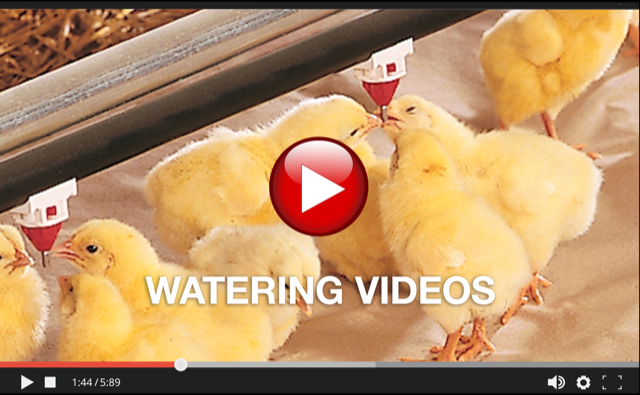If chemicals you are using to clean and sanitize your watering system also break down the outer chromium oxide layer of the stainless steel drinker parts, thereby exposing these parts to corrosion, how will you know? You can’t see the parts inside. And how can you prevent it from ever happening in the first place?
To see if corrosion is a problem for your watering system, the first thing to do is check for leaking drinkers. You can do this by winching the system up to eye level and blowing the water off the trigger pins of 30 consecutive drinkers. Then watch for 30 seconds and see if any drops of water fall off the trigger pins. If that indeed happens, replace these leaking drinkers with new drinkers. Take the leaky ones and disassemble them on a clean surface.
First, look for any debris in the seat and ball area — any foreign material that would prevent the seat and ball from fully contacting each other. Next, check for biofilm or glucose build up. Simply press the ball against the tabletop with your thumb and lift off the table. If ball hangs or sticks to your thumb for more than a second a thorough cleaning of the watering system is in order. Here’s how.
If you do not find debris or evidence of biofilm and/or glucose material, then the next step is to inspect the drinkers for corrosion. The best way to do this is to simply compare your used drinkers with new, unused drinkers (we recommend you keep some unused drinkers in a sealed bag marked as “Sample drinkers — do not install”). Compare the seat and ball of the used drinkers with those of the unused drinkers. Look for a dulling of the ball’s finish and/or the finish of the seat. If you see any evidence of dulling on the drinker balls, they need to be replaced. The same applies if the damage is on the seat.
To prevent damage, only use drinker line cleaners that will remove biofilm and glucose but not the all-important oxide layer that protects stainless steel from corrosion. This is the reason we recommend hydrogen peroxide based products — very effective at cleaning without compromising stainless steel components, even in high concentrations, which is not the case when using chlorine and acidifiers. This is our best recommendation, used in conjunction with high pressure flushing. Click to our article on preventing biofilm build up for more detailed information on chemicals to avoid.
So the solution is very simple. Do what dairy farmers do to sanitize their expensive stainless steel equipment. Simply use the right chemical for the job, those that remove biofilm, and kills all the harmful pathogens but does not dissolve the stainless steel’s oxide layer. Hydrogen peroxide based cleaners will do this for poultry farmers.
If you have questions or comments about this series of corrosion related articles, or any other subjects, please use the form on this website to let us know.












